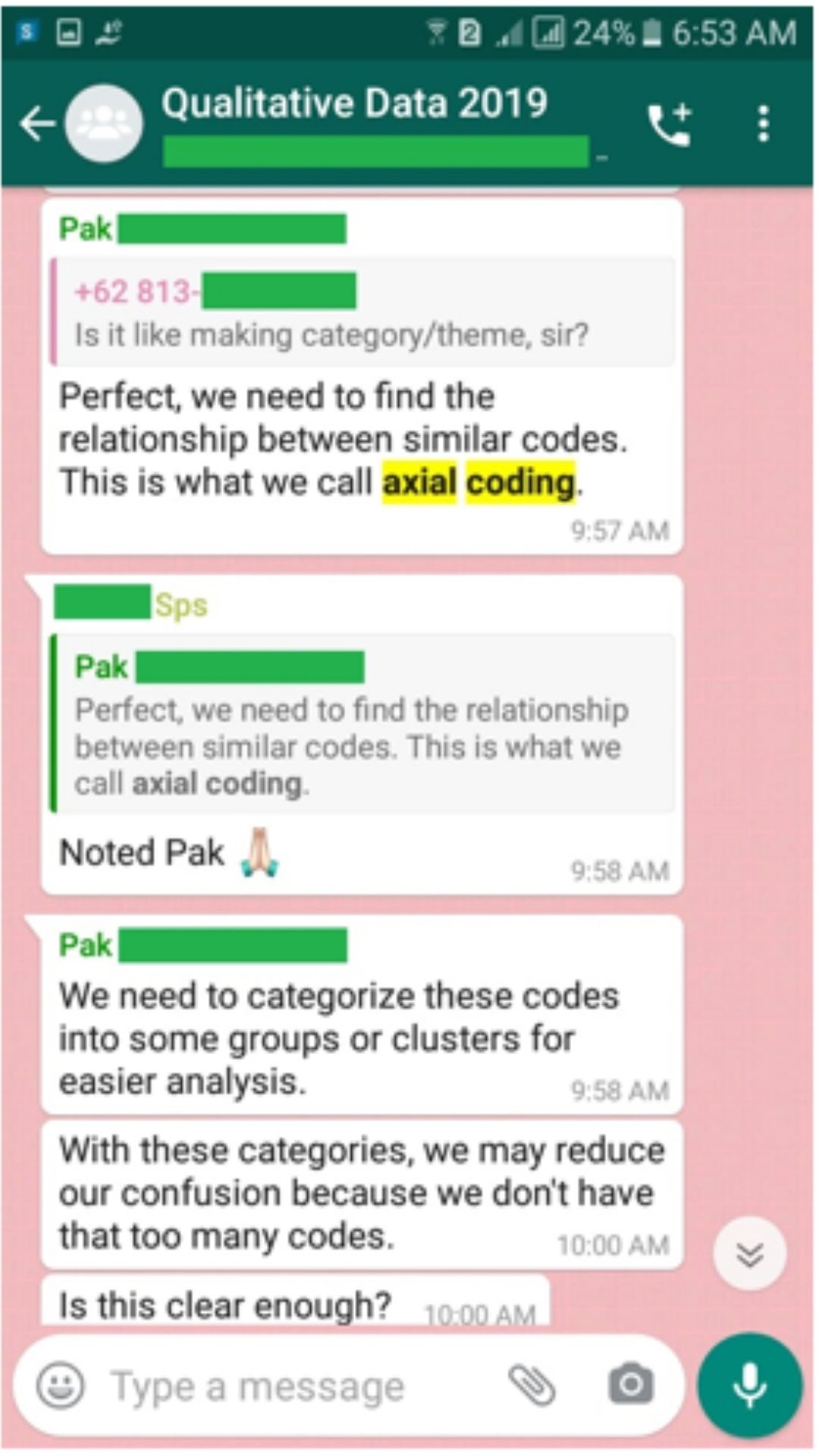Synchronous online discussion: teaching English in higher education amidst the covid-19 pandemic
DOI:
https://doi.org/10.21070/jees.v5i2.646Keywords:
Synchronous online learning, Teaching English, Higher educationAbstract
During the outbreak of Covid-19 pandemic, many educational institutions have adapted various online teaching modes. However, studies exploring the employment of synchronous online discussion for teaching English in higher education context were still limited. This study aimed at investigating EFL university students’ perceptions and challenges on the use of synchronous online discussions. Employing virtual observations and semi-structured interviews, five Master students of English education study program of a public university in Bandung participated in this study. Data were based on three domains of communication types for e-learning; content-related, planning of tasks and social supports. The findings showed that the students had positive response to the employment of synchronous online discussion. They believed that synchronous online discussion was a good online teaching mode where task negotiation, task planning, opinions, questions and answers can be done easily. In addition, they could improve critical thinking and writing skills as well as get social supports. Meanwhile, poor internet connection and misunderstanding of tasks became the challenge.
HIGHLIGHTS
- Covid-19 pandemic demands the employment of online learning mode.
- Synchronous online discussion offers distinctive features for accommodating higher education learning, specifically in the teaching of English.
- Data analysis based on three domains namely content-related, planning of tasks and social supports would be administered.
Downloads
References
Arends, R. I. (1997). Classroom instruction and management. United States: Central Connecticute State University
Arifin, D. (2020). Status keadaan tertentu darurat bencana wabah penyakit akibat virus Corona di Indonesia. Badan Nasional Penanggulangan Bencana (BNPB). Retrieved from https://bnpb.go.id/berita/status-keadaan-tertentu-darurat-bencana-wabah-penyakit-akibat-virus-corona-di-indonesia-
Burnett, C. (2003). Learning to chat: Tutor participation in synchronous online chat. Teaching in higher education, 8(2), 247-261.
Carliner, S. (2004). An overview of online learning (2nd ed.). Armherst, MA: Human Resource Development Press
Duemer, L., Fontenot, D., Gumfory, K., Kallus, M., Larsen, J., Schafer, S., & Shaw, B. (2002). The use of online synchronous discussion groups to enhance community formation and professional identity development. The Journal of Interactive Online Learning, 1(2), 1-12.
Ellis, R. A., Goodyear, P., Prosser, M., and O’Hara, A. (2006). How and what university students learn through online and face-to-face discussion: conceptions, intentions and approaches, Journal of Computer Assisted Learning, 22, 244–256
Gulley, E. H. 1960. Discussion, conference and group process. USA: University of Illinois
Haythornthwaite, C. (2002). Building social networks via computer networks: Creating and sustaining distributed learning communities. In K. Ann Renninger and Wesley Schumar (Eds.), Building virtual communities: Learning and change in cyberspace, (pp. 159-190). Cambirdge University Press
Hrastinski, S. (2008). Asynchronous and synchronous e-learning. Educause quarterly, 31(4), 51-55.
Jayaron, J., & Abidin, M. J. Z. (2016). A pedagogical perspective on promoting English as a foreign language writing through online forum discussions. English Language Teaching, 9(2), 84-101.
Lee, L. (2002). Enhancing learners' communication skills through synchronous electronic interaction and task‐based instruction. Foreign Language Annals, 35(1), 16-24.
Li, S., Zhao, X. D., & Zhao, R. (2005). On learner-centered teaching model and college English teaching reform [J]. Journal of Northeastern University (Social Science), 2.
Liang, M. Y. (2010). Using synchronous online peer response groups in EFL writing: Revision-related discourse. Language Learning & Technology, 14(1), 45-64.
Liu, R., Qiao, X., & Liu, Y. (2006). A paradigm shift of learner-centered teaching style: reality or illusion? Journal of Second Language Acquisition and Teaching, 13, 77-91.
Mackey, A. & Gass, S. M. (2005). Second Language Research: Methodology and Design. USA: Lawrence Erlbaum Associates
MacKnight, C. B. (2000). Teaching critical thinking through online discussions. Educause Quarterly, 23(4), 38-41.
Mayadas, F. (1997). Asynchronous Learning Networks: A Sloan Foundation Perspective. Journal of Asynchronous
Learning Networks, 1(1), 1-16.
Merriam, S. B. & Tisdell, E. J. (2016). Qualitative research-A guide to design and implementation, fouth edition. San Fransisco: John Wiley & Sons.
Miles, M. B., & Huberman, A. M. (1994). Qualitative data analysis: An expanded sourcebook (2nd ed.). Sage Publications.
Moorhouse, B. L. (2020). Adaptations to a face-to-face initial teacher education course ‘forced’online due to the COVID-19 pandemic. Journal of Education for Teaching, 1-3.
Nunan, D. (2012). Learner-centered English language education: The selected works of David Nunan. Routledge.
Omar, H., Embi, M. A., & Yunus, M. M. (2012). ESL learners' interaction in an online discussion via Facebook. Asian Social Science, 8(11), 67.
Owusu-Fordjour, C., Koomson, C. K., & Hanson, D. (2020). The impact of covid-19 on learning-the perspective of
the Ghanaian student. European Journal of Education Studies. DOI: 10.5281/zenodo.3753586
Parra, G. E. C. (2000). Learning English through online discussion groups. Journal of Adolescent & Adult Literacy, 36-38.
Perveen, A. (2016). Synchronous and asynchronous e-language learning: A case study of virtual university of Pakistan. Open Praxis, 8(1), 21-39.
Ragupathi, K. (2018). Facilitating effective online discussions: Resource guide. Centre for Development of Teaching and Learning (CDTL).
Saldana, J. (2011). Fundamentals of qualitative research. New York: Oxford University Press.
Salmon, G. (2013). E-tivities: The key to active online learning. Routledge.
Shahabadi, M. M., & Uplane, M. (2015). Synchronous and asynchronous e-learning styles and academic performance of e-learners. Procedia-Social and Behavioral Sciences, 176(20), 129-138.
Sutherland‐Smith, W. (2002). Integrating online discussion in an Australian intensive English language course. TESOL journal, 11(3), 31-35.
Tuan, L. T. (2011). Negotiating tasks in EFL classrooms. Journal of Language Teaching & Research, 2(1).
Velavan, T. P., & Meyer, C. G. (2020). The COVID-19 epidemic. Trop Med Int Health, 25(3), 278-280. doi:10.1111/tmi.13383
Wdowik, S. (2014). Using a synchronous online learning environment to promote and enhance transactional engagement beyond the classroom. Campus-Wide Information Systems.
Williams, L., & Lahman, M. (2011). Online discussion, student engagement, and critical thinking. Journal of Political Science Education, 7(2), 143-162.
World Health Organization. (2020). Key Messages and Actions for COVID-19 Prevention and Control in Schools. Retrieved from https://www.who.int/docs/default-source/coronaviruse/key-messages-and-actions-for-covid-19-prevention-and-control-in-schools-march-2020.pdf?sfvrsn=baf81d52_4
Yamada, M. (2009). The role of social presence in learner-centered communicative language learning using synchronous computer-mediated communication: Experimental study. Computers & Education, 52(4), 820-833.

Published
How to Cite
Issue
Section
License
Copyright (c) 2020 Aji Budi Rinekso, Ahmad Bukhori Muslim

This work is licensed under a Creative Commons Attribution 4.0 International License.







